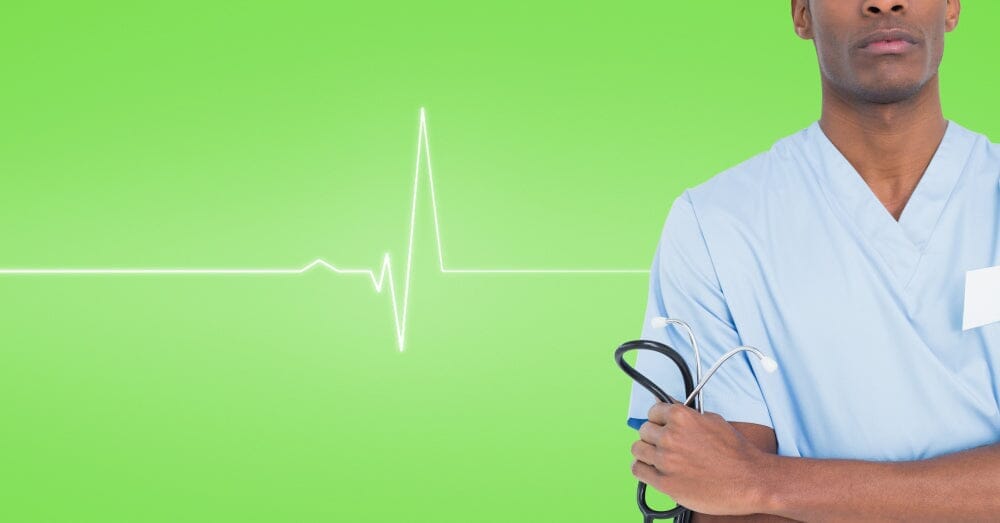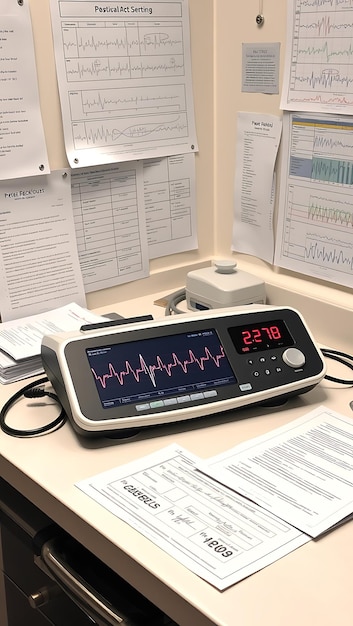
Types of ECG Tests: Holter Monitor, Stress Test, and Resting ECG
Time to read 8 min
Time to read 8 min
An electrocardiogram is an essential diagnostic technique for determining the heart condition through the record of the electrical activity of the heart. The impulse originating within the heart determines the pace and contraction of the heart muscle, and these impulses can be measured and may reveal the underlying conditions of the heart, including arrhythmias, ischemia, and myocardial infarction. Electrocardiography is crucial in evaluating and managing many cardiovascular disorders.
One can have various kinds of ECG tests depending on the required type of diagnosis. Different kinds of tests are offered, like the resting ECG, where one can take a snapshot of the heart, while the Holter monitor is similar but for an extended period to stress tests, where one can record the heart in action during stress. This article goes deeper into these three types of ECG tests, to explain how they are conducted, why they are done, and what factors care providers consider from the results.
A resting ECG is the simplest form of diagnostic test that can be carried out on an individual. It captures the electrical activity of the heart when the patient is completely calm, thereby providing an idea of the efficiency of the heart during rest. This test is very important since it is able to identify things like abnormal heart rhythms, an enlarged heart, or other signs of heart attack in the past. It also gives the first diagnosis of the electrical conduction structure of the heart.
Routine ECGs may be conducted during annual health check-ups or when a patient complains of chest pains, shortness of breath, dizziness, or palpitations. EKG is a prompt, painless examination that can offer vital information on the first assessment of the heart’s condition.
A resting ECG is fairly non-invasive and normally requires only about 5 to 10 minutes to complete. An example of this is when the patient is seated on a bed or examination table, and a healthcare practitioner affixes electrodes, which are small adhesive pads connected by wires to the patient’s chest, arms, and legs. These electrodes capture the electrical activity of the heart and pass the signals to the ECG machine, where these electrical impulses are plotted as waves.
During the test, the patient is expected to hold his or her position and avoid breathing or moving in a way that will affect the outcome. There is no physically demanding test, and the patient does not have to undergo any restrictions after the test. In many such cases, no special preparation is warranted, but patients are often instructed not to apply any lotion or oil on their skin for the test so that the electrodes stick well.
A resting ECG is commonly performed for a variety of reasons:
Evaluation of symptoms: In case a patient is having chest pain, palpitations, dizziness, and shortness of breath, it is useful to get a resting ECG to know if these are cardiac-related.
The results of a resting ECG are displayed as a graph, showing waves that represent different phases of the heart’s electrical cycle. Healthcare providers look at several key aspects, including:
Heart rhythm: Whether the patients’ heartbeats are rhythmic or random, suggesting arrhythmias like atrial fibrillation or ventricular tachycardia.
A resting ECG checks the heart's electrical activity at one moment. It can miss problems that come and go. It may not catch issues that happen during exercise or movement. For a better look at the heart, doctors might need more tests. These could be a Holter monitor or a stress test.
A Holter monitor is a portable ECG that is used in the monitoring of the heart and is usually worn for 24-48 hrs, though it can be worn for as long as a week in certain circumstances. The primary advantage of the Holter monitor over routine resting ECG is that it can monitor the heart for 24 hours or more. Thus, any periodic problem that may not manifest itself during the time the resting ECG is being conducted could be captured.
Holter monitors are very reliable when used in diagnosing rare irregular heart rhythm disorders, such as atrial fibrillation, or to determine how well a patient’s heart is performing during his/ her usual routine. This is significant because there are some pathologies of the heart that are evident only during moments of stress or on exertion and can easily go unnoticed if the doctor only administers a resting ECG.
A holter monitor is a lightweight device that the patient wears around the neck while going through his or her daily activities and at night. It is attached to leads that are positioned onto the chest like the wires used in a routine lying ECG. These electrodes capture electrical activity from the heart and relay the information to the monitor, where data is taken at regular intervals that span the monitoring period.
During the test, the patient puts his or her regular daily routine. However, the patient may be asked not to engage in certain activities, such as showering or swimming, that could pull off the electrodes. A patient is usually required to write down daily activities and if they feel such symptoms as chest pains, dizziness, palpitations, etc. This elucidates how physicians are able to associate any abnormality observed on the ECG with certain activities or certain times of the day.
Holter monitors are often recommended in the following situations:
After wearing the monitor, doctors look at the heart data. They check for things like:
The Holter monitor is helpful but has limits. It only records for 1 or 2 days, so it might miss problems that happen less often. If that happens, doctors may suggest a different monitor that can be worn for a longer time.
A stress test (sometimes referred to as an exercise ECG) is used to monitor how the heart works when it is under pressure, usually during exercise, by having the patient exercise on a treadmill or by cycling while hooked to an ECG machine. It aids in the diagnosis of coronary artery disease because different areas of the heart are not supplied with blood during stress. It also assesses exercise capacity, the responsiveness of treatments, and the risk of heart disease in general.
The patient walks or rides a bike, often at a slow pace, but with monitoring equipment such as an electrocardiogram on him or her. The intensity of the exercise gradually rises up in order to increase the rate of the heartbeat. Symptoms such as heart rate, blood pressure, and ECG are observed during this process.
The exercise is performed to the intensity of the maximal predicted age-predicted heart rate of the patient, the onset of symptoms such as chest pain or new onset of shortness of breath, or the patient feeling exhausted. The patient is also monitored during the cool-down period to monitor his or her recovery.
In assessing the heart performance and blood flow, doctors seek for exercise tolerance, heart rate and blood pressure changes, and changes for ischemic such as ECG that depict the ST segment depression.
Some patients, due to physical limitations, can't exercise. In such cases, a pharmacological stress test uses medication to mimic exercise effects on the heart.
Resting ECG: Indicates the status of the heart when the patient is lying down and not physically active. Good for identifying steady-state rhythm or electrical abnormalities but suboptimal for capturing intermittent abnormalities.

Holter Monitor: Records heart activity for 24-48 hours or even more and captures temporary or rare arrhythmia or problems that appear during the daily physically active routine.
Stress Test: Quantifies the pumping ability of the heart during physical activity, revealing conditions with impaired blood circulation or exercise endurance issues.
Resting ECG: Safe, established method that gives information regarding resting heart rate, heart rhythm, and conduction.
Holter Monitor: A Holter monitor records your heart for a long time. It finds heart problems that happen off and on.
Stress Test: A stress test checks how your heart works when you exercise. It can find heart problems like blocked arteries.
ECG tests check your heart in different ways. Resting ECGs, Holter monitors, and stress tests all help find heart issues. Knowing about these tests helps you take care of your heart. If you have heart symptoms, ask your doctor which test is best for you.
There are several types, including resting ECG, Holter monitor, stress test, and event monitor.
The four types are resting ECG, Holter monitor, stress test, and event monitor.
The most commonly used ECG is the resting ECG.
* * Medical Disclaimer - The following information is for educational purposes only. No information provided on this website, including text, graphic, and images, are intended as substitutes for professional medical advice. Please consult with your doctor about specific medical advice pertaining to your condition(s).






